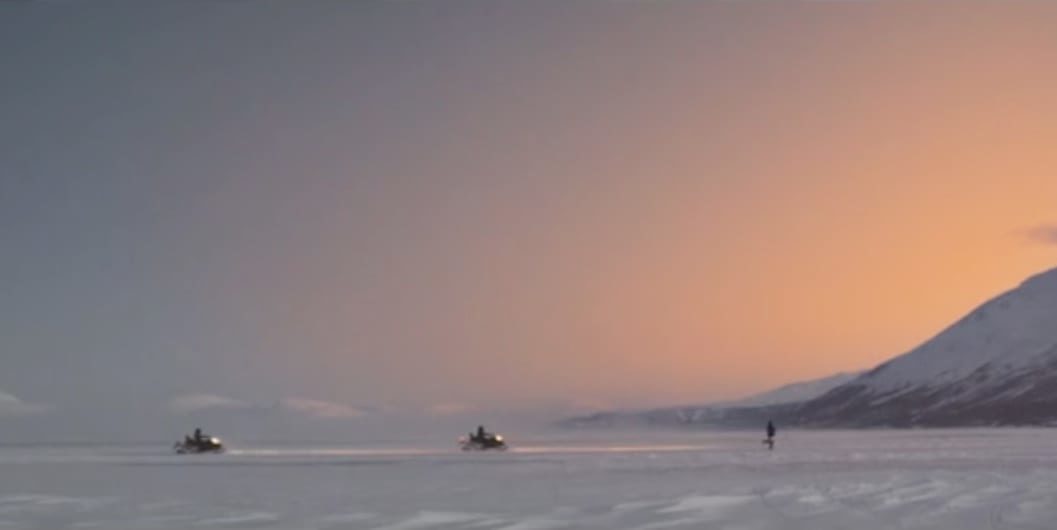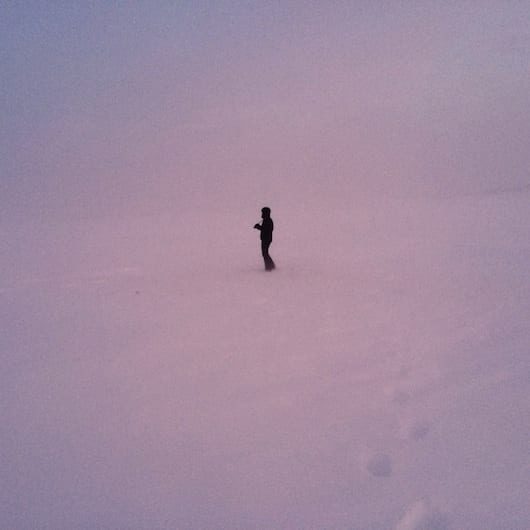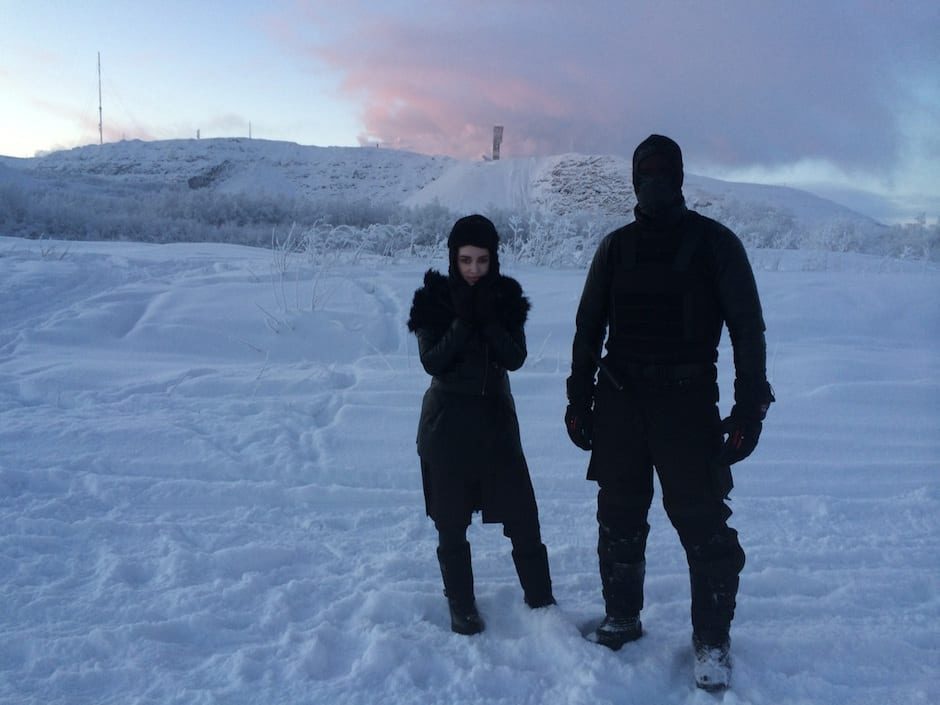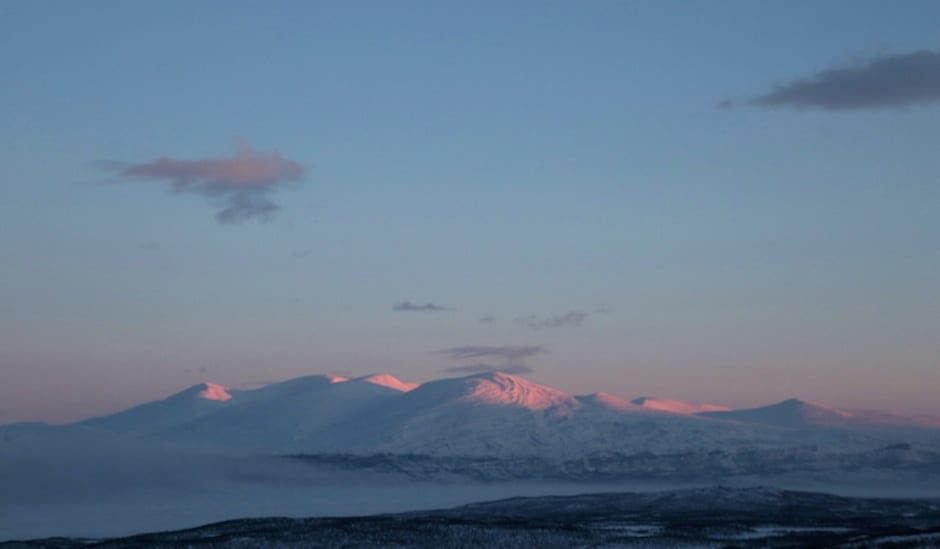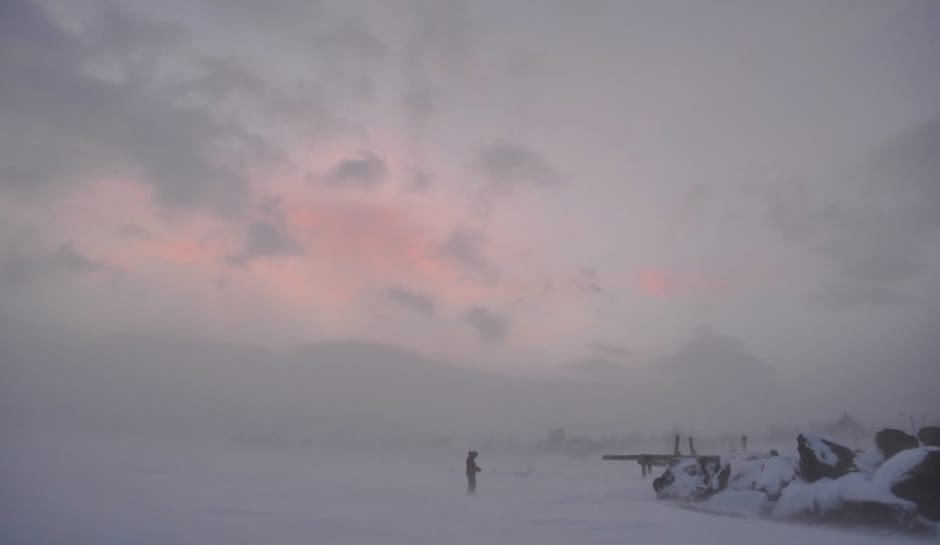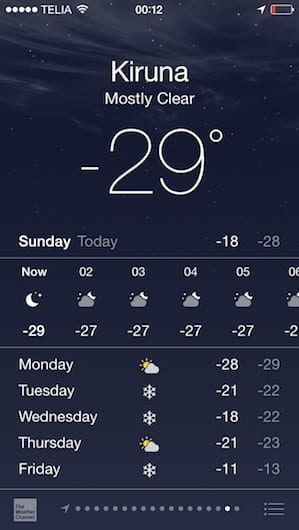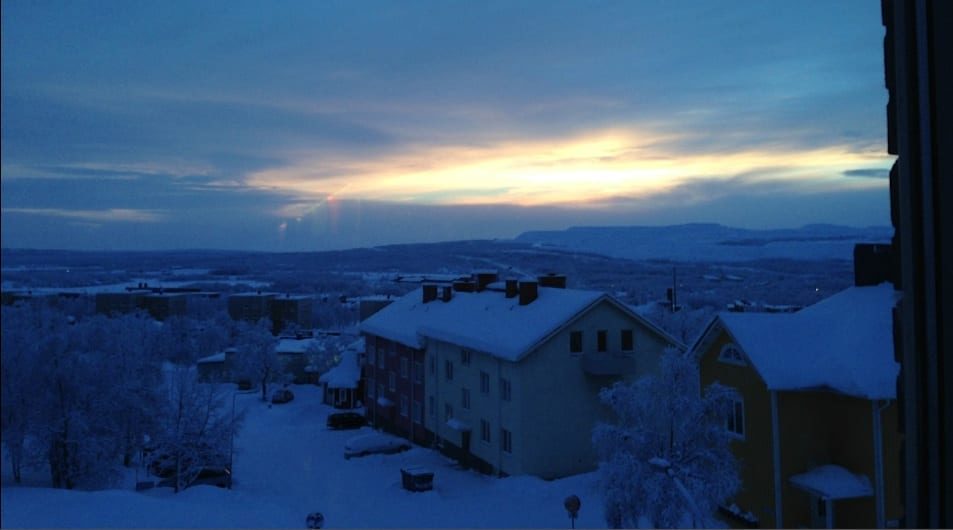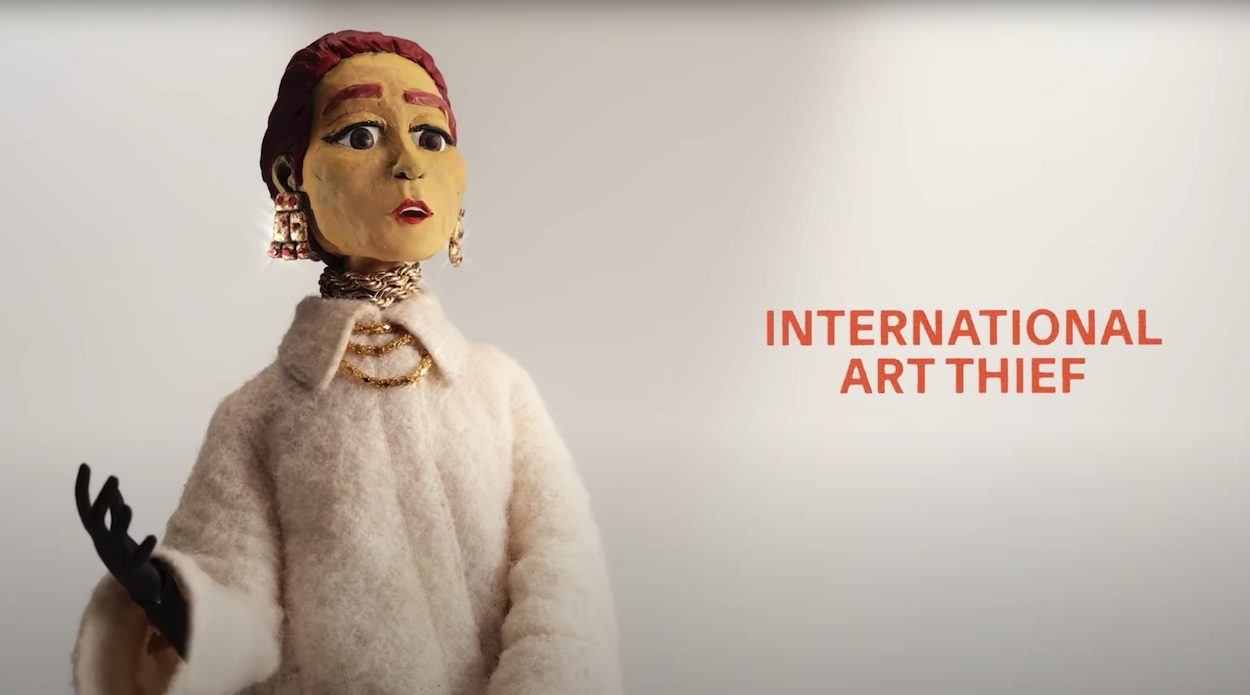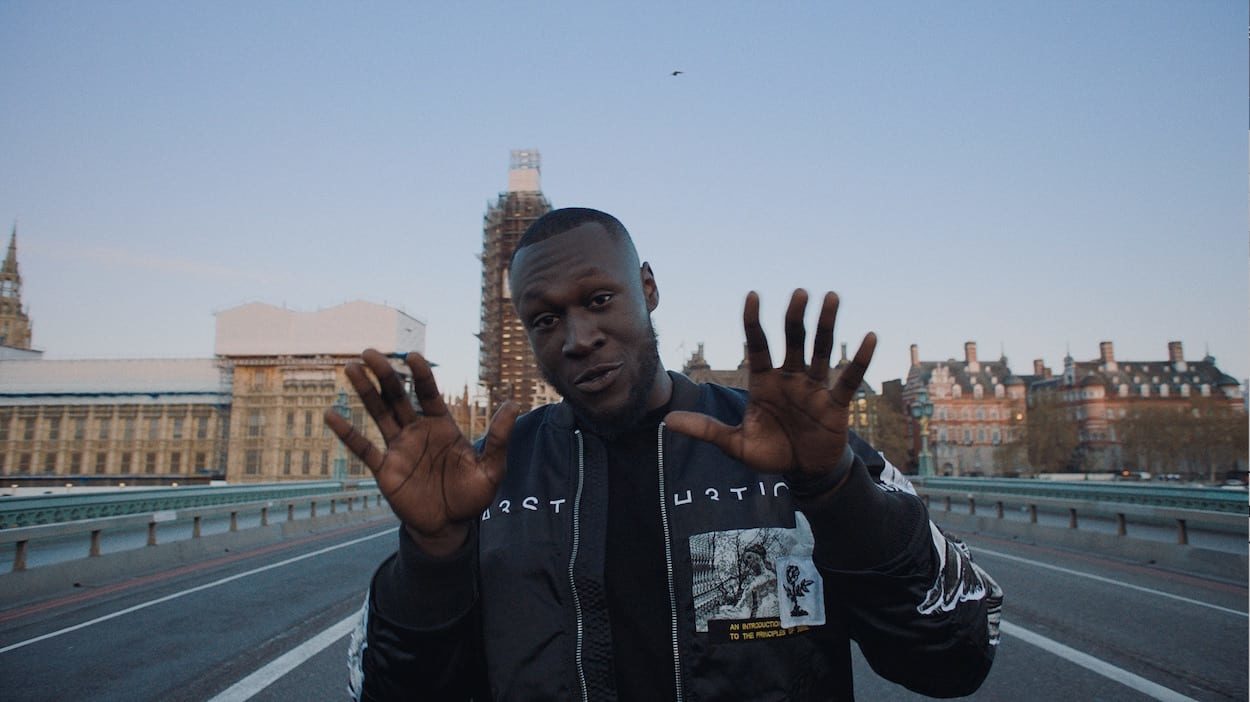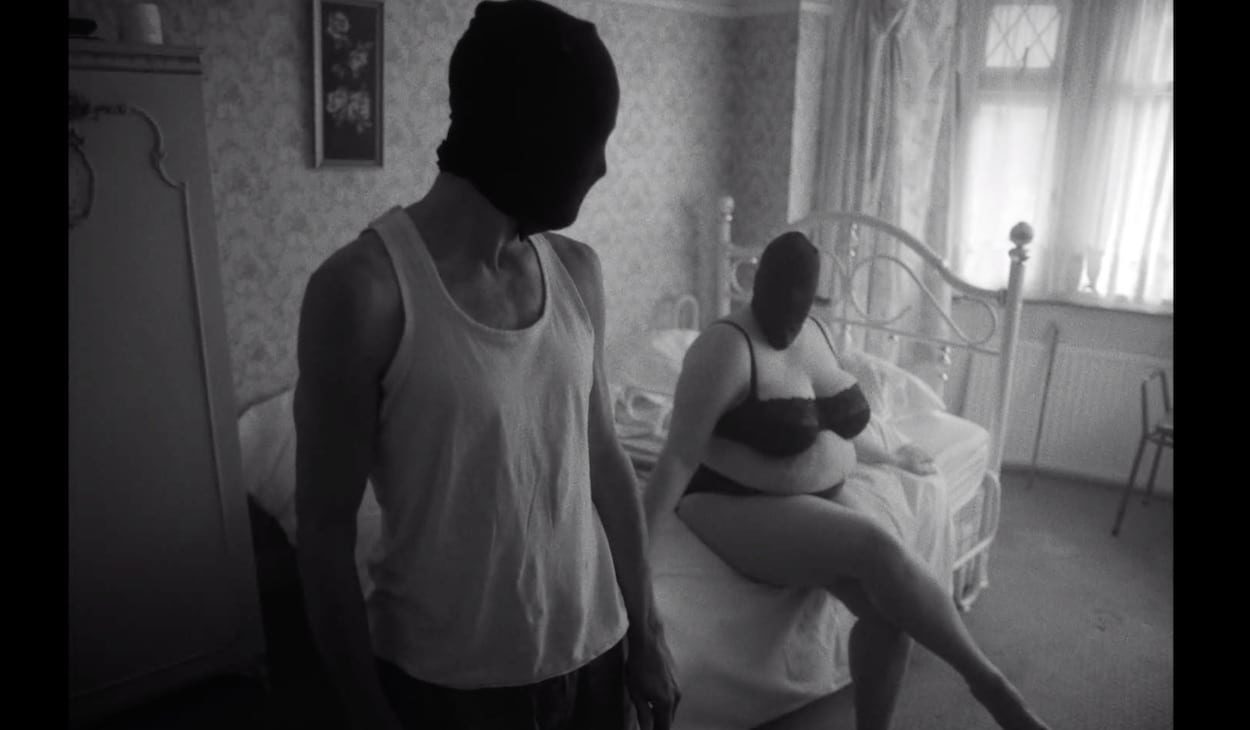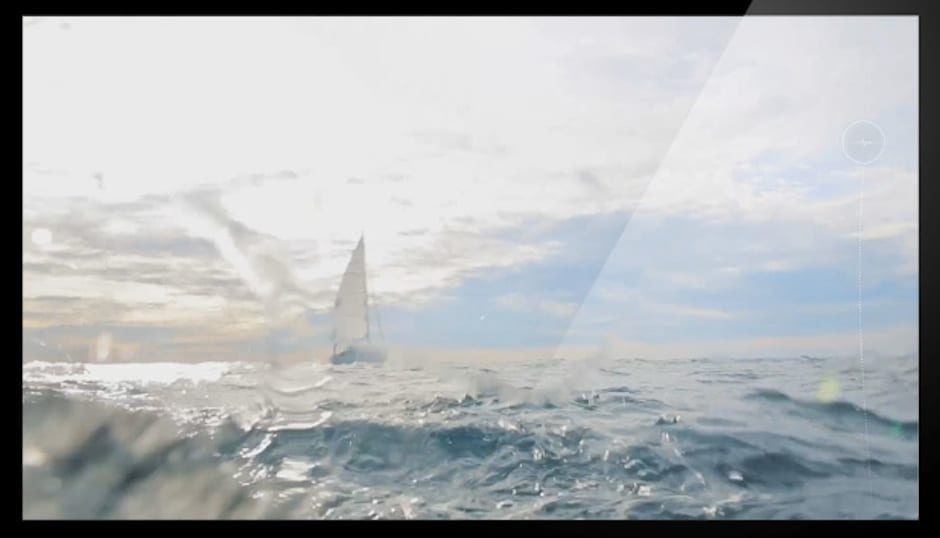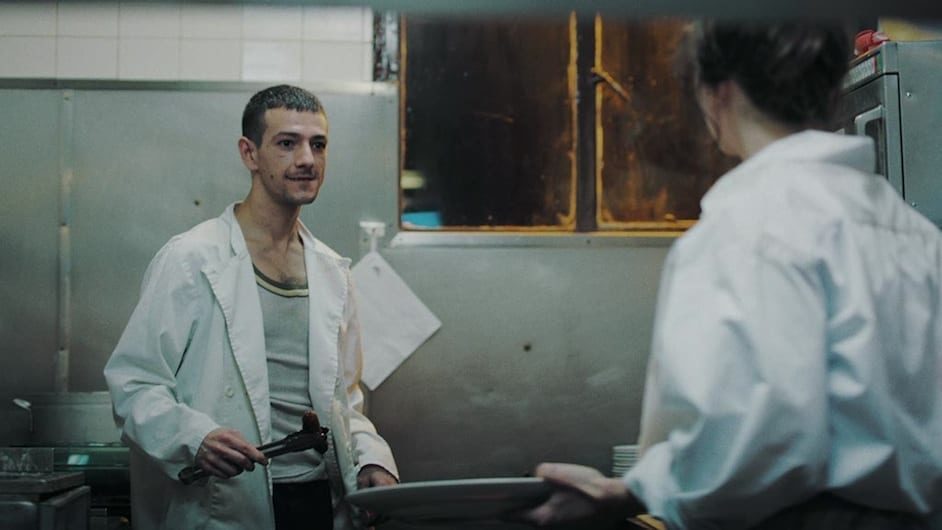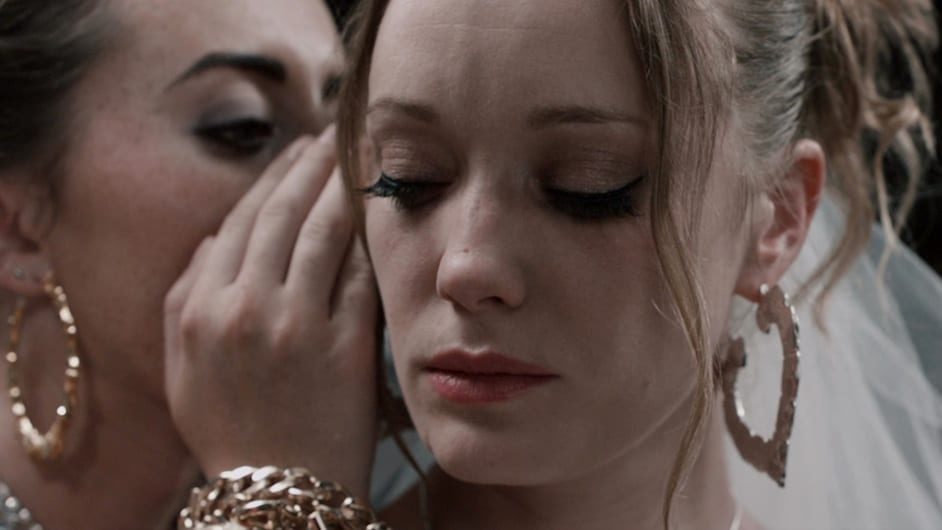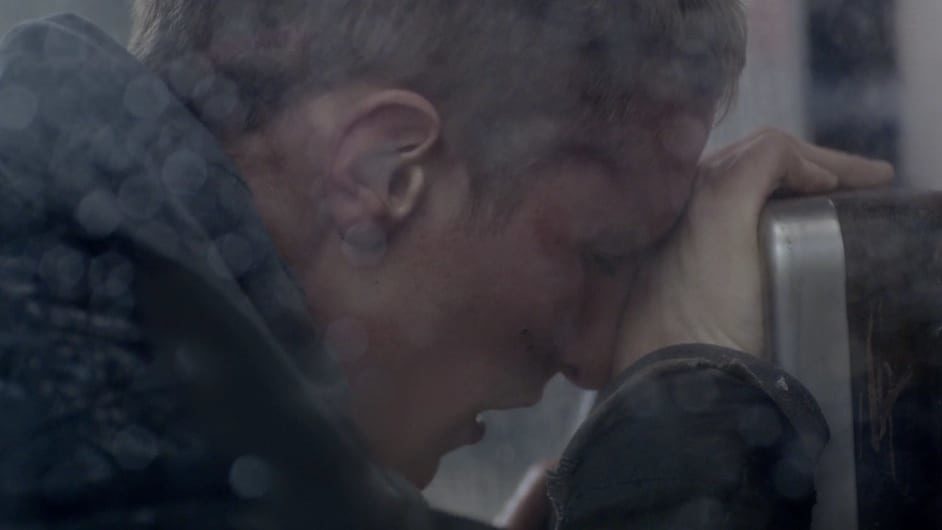Why did you choose the location in northern Sweden?
The location, Kiruna, initially came recommended from the band. One of their mums lived there and their description of the light and the history of the city really struck me. It was a perfect location for creating this parallel universe, at the end of the world and human habitation.
Kiruna itself has a fascinating story – it’s the site of heavy duty iron ore extraction, and the money that is made through the industry keeps the place afloat. However, they have paid a price for it. The mining excavations run deep under the city, and have totally destroyed the geological foundations of the place, to the extent that the risk of subsidence threatens to swallow the city whole. As such they are moving each citizen to a newly built city, and each heritage building, such as the town hall, will be moved brick by brick. This is a strange and surreal place, at odds with the sweeping majesty of the landscape around it.
Seeing more shots of the place I was totally in awe of the light quality – it has this Nordic harshness, unrelenting, but bitterly beautiful at sundown. I wanted to play with this winter half light, drawing on its heaviness, the lack of daytime in winter, and the constant eerie blankets of snow. One of the most important draws was also LA PORTEN, this stunning gateway to Lapland, which is the image at the end. I’ve never seen anything like it, it’s one of the most beautiful places, this huge ridge cut through with a passage where the reindeer move in herds.
How tricky was it filming in such heavy snow?
It requires a lot of kit, that’s for sure! We needed special boots, liners, 3 pairs of trousers, balaclava’s, 2 pairs of gloves, hats, goggles. Our focus puller felt the brunt of it, he had to keep his hands relatively unswaddled in order to pull focus!
The major worry was that the weather was so unpredictable, on one day of the recce there was a total whiteout, you couldn’t see much beyond your own hand. Plus the cold was really affecting our equipment, the cables froze, and the batteries too.
In the end we lost a drone – it just fell out of the sky when its batteries froze. Kate, the lead singer, was amazing. We really put her through her paces, marching and running through minus 30 degrees in a relatively unprotecting costume and no hat. When the wind picks up you know its getting really cold, one of our guides told us face away from it as it would give us frostbite pretty quickly – you could see patches of people’s skin which weren’t covered going totally white like blisters. Also heavy snow means everything taking twice as long.
Was it always in your mind when you wrote the narrative or were there other options?
It was always in my mind. The narrative was really born of the place. It seemed to tell itself in conjunction with the track. There’s something icy and Nordic about those beats, and her voice cuts through it all.
With the pace of the tune we needed a story that had drama and impact, the chase scene, the kids interrogation, the mysterious crystal substance that all of their stories are interwoven with – these all came from the stories and images of the place, meeting with the music itself.
The song, and therefore the film, is about equality and self-expression. We see a lot of divisions built up between people now days, whether it’s homophobia in Russia, or anti-immigration movements in Europe. Against this blanket of desired sameness which these neo-conservative movements project, I wanted to tell a story about resistance, people who would risk solidarity against uniformity.
Please tell us what were behind your decisions to shoot with natural light and using the grade?
I wanted to create an oppressive world washed in toxic green light, with something redolent of night-vision and surveillance. Through this visual approach I intended the viewer to feel the heaviness of this universe, its unbearable atmosphere.
The purpose of the grade in the end is to act as a contrast to the vibrant enticing light that these ‘illegal’ crystals give off. They are a spark of light, of resistance, and as such are heavily controlled by the state that wishes to maintain the status quo. I guess I was thinking a lot about the extent to which surveillance is part of our culture now, and how that would feel if it was taken to its logical extreme, externalised in the film through these objects and the metaphor of colour and light.
How did you go about casting in Kiruna?
I wanted to work with locals in their natural habitat. We arrived a couple of days prior to the shoot and street cast. Considering it’s a town of no more than 18,000 people, most of whom work in the mine, we got incredibly lucky. For example, the kid and his parents are a real family, the “dealer” a miner I met on the street, the kids in the car from the local high school and the teacher – the head of drama at the school.
All but one character are authentic Kirunians, namely Fred our Danish focus puller, who plays the youngster who picks up the crystal at the petrol station. Although we found dozens of other potential people, but I just loved his face from the very outset and it didn’t take too much persuasion to get him in front of the camera. My amazing DOP, Victor Seguin, ended up pulling focus for that scene while I operated. Not ideal, but a fair compromise for a great performance from Fred.
Who’s the band? And did you work with them closely?
The reason that this film came together was that we went on this journey as collaborators. We’d been talking about working together on this project since autumn and really pulled together to get it funded and made. From street casting to working in minus 30 degree conditions, the band were hands on and always helpful – a joy to work with and co-conspirators in the making of this strange world in the ice and snow. I hope we work together again soon!
